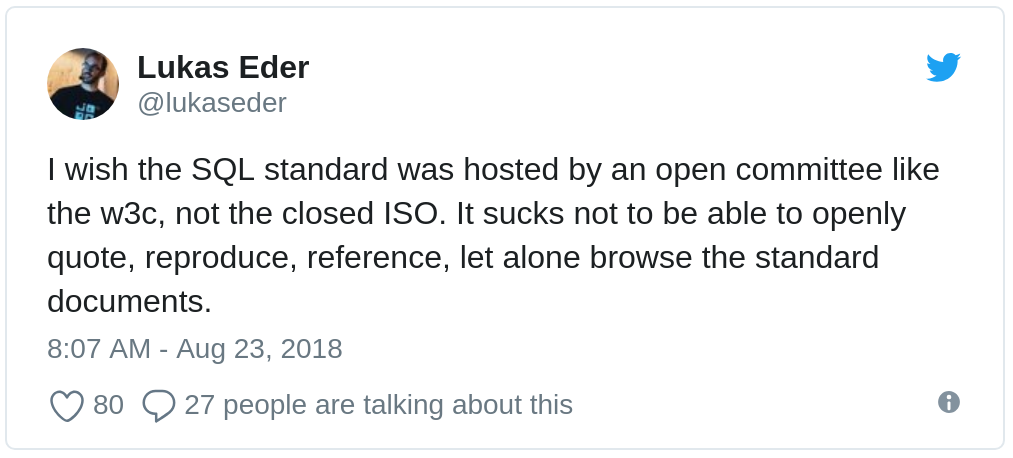#218 — August 24, 2018 |
Database Weekly |

|
|
Don't Panic, Redis is to Remain BSD Licensed — If you’re on social media, you may have seen a little panic about a page Redis Labs published about Redis modules being developed by Redis Labs adopting a clause restricting their use as the basis for competing managed services. This announcement was widely misinterpreted as Redis going ‘proprietary’, but have no fear, Redis itself remains as open as ever. Salvatore Sanfilippo |
|
FASTER: A Fast Key-Value Store From Microsoft Research — Available in both C# and C++ versions, FASTER uses a unique ‘hybrid record log’ design that combines a traditional persistent log with in-place updates, to shape the memory working set and retain performance. Here’s a full paper on its architecture. Microsoft |

Getting Started: Writing Data to InfluxDB — This is a beginner’s tutorial for how to write static data in batches to InfluxDB, an open source time series database. InfluxData sponsor |
|
How to Read 100s of Millions of Records-per-Second from a Single Disk — An overview of the implementation and performance of two recent additions to LocustDB, an extremely fast open-source analytics database built in Rust. Clemens Winter |
|
What’s New in MariaDB 10.3: Better SQL Support — MariaDB was originally described as a branch of MySQL that remained mostly compatible but it has diverged significantly and 10.3 has significantly boosted MariaDB’s modern SQL support. Markus Winand |
|
TimescaleDB vs. InfluxDB: Purpose Built Differently for Time-Series Data — An in-depth look into how two leading time-series databases stack up against another. Mike Freedman |
|
Pandora’s Journey from Hadoop to MemSQL — Pandora Media, the music streaming service, transitioned two years ago from heavy reliance on Hadoop for distributed processing to MemSQL as its primary database. George Leopold (Datanami) |
|
Re-Architecting Slack’s Workspace Preferences: How to Move to an EAV Model to Support Scalability — Early design decisions can cause problems at large scale - an issue Slack is running into. They were storing preferences as a JSON blob in a single column, but have created a new data model to scale. Alisha Ukani (Slack) |
|
New MongoDB Whitepaper - Download Today — Aggregation framework stages and pipelining. Severalnines sponsor |
|
3 Ways to Detect Slow Queries in PostgreSQL — Make use of the slow query log, check execution plans with Hans-Jürgen Schönig |
|
Using MongoDB's JSON Schema Validator for Data Integrity — The flexibility of MongoDB as a schemaless database is one of its strengths but it’s possible to introduce validation checks with its JSON Schema Validator. Corrado Pandiani (Percona) |
|
How to Benchmark Postgres Performance with Sysbench — Sysbench is a scriptable database and system performance benchmarking tool built on LuaJIT. Ashraf Sharif |
|
Simplifying Recursive SQL Queries — Recursive CTEs are a great tool to simplify complex application logic. Here we see how you can use them effectively to find categories and sub categories. |

|